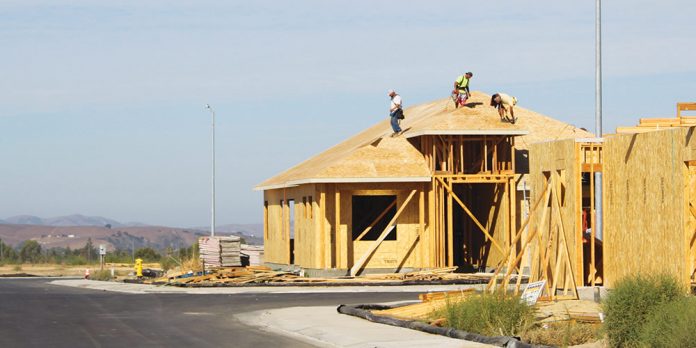Hollister mayoral and City Council candidates are talking about “smart growth,” concerned that a renewed housing boom will put a strain on city water, sewer and police services, and increase traffic congestion, especially for commuters on Highway 25.
City limits have remained static and some say development plans are harder to come by.
But if you drive along Fairview Road, just outside of the eastern city limits, you wouldn’t know it.
Builders’ plans approved just before the Great Recession bee stalled for several are now on the front burner. Planners expect 600 new homes to have been completed next year, fulfilling plans approved several years ago.

Streets and utilities are going in, house frames are going up and entire neighborhoods are rising at a fast pace in the Sunnyslope area east of Hollister. Banks have eased credit for contractors, mortgage rates are still low and housing bargains in San Benito County continue to attract folks who work in Santa Clara County.
The city limits—both geographical and political—don’t appear to have been any impediment to the new homes being built by Anderson Homes in its Santana Ranch development, and by Legacy Homes, also in Sunnyslope.
A new water treatment plant for the Sunnyslope Water District eases the strain on older systems, and an older treatment plant also is located on the gentle slopes that rise from Fairview Road.
The farm fields that surround a regional CalFire station are gradually being gobbled up by large graders preparing home sites.
County planners say that one construction phase of 150 new Santana Ranch homes is to be completed by November, adding to the 74 homes already built.
Construction on another 200 homes is expected to begin in the winter or spring, depending on the weather, for the complete 424-home project.
Legacy Homes has completed 85 of its 176-home development, according to the county.
Hollister planners had anticipated continued growth after the explosion of the 1990s, but in 2002 Hollister voters enacted a growth cap initiative that limits new residential development to 244 homes per year.
That, plus the 2008-10 recession, slowed growth considerably, within the city limits at least.
The city growth projection in the 2005 General Plan had estimated that the city would grow to
44,790 by 2010, and exceed 53,000 by 2020. But the 2010 census reported more modest growth of Hollister’s population, from 34,928 to 38,404 in 2017. Newer predictions are more conservative, to 40,000 by 2020 and 47,000 by 2030.










